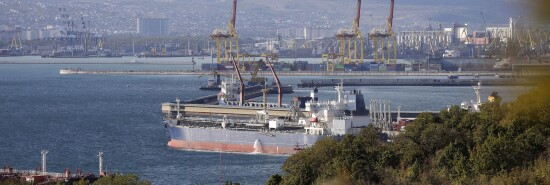
Treasury officials tout success of Russian oil price cap even as profits rise
Breanne Deppisch
Video Embed
The Russian oil price cap has been successful in choking off the Kremlin’s war revenue while also keeping its supplies on the market, senior Treasury Department officials said this week, even as they acknowledged recent trading house data that show its barrels are fetching profits above the $60 limit.
Speaking to reporters Thursday, Treasury officials said it is “not surprising” that some Russian oil is still being shipped to buyers at or above the $60 cap set by a G-7-backed coalition eight months ago, both via a fleet of illegal “shadow” tankers and service providers outside the price cap coalition.
SOCIAL SECURITY UPDATE: PAYMENT WORTH UP TO $4,555 GOES OUT IN SEVEN DAYS
“But even those transactions come with a cost,” said Eric Van Nostrand, the Treasury Department’s acting assistant secretary for economic policy.
Citing data from the Russian Ministry of Finance, Treasury officials said that Russian government oil revenues for the first half of the year have fallen 50% compared to the previous year even as its oil exports have increased.
That’s because any oil sold outside the G-7-backed coalition is still sold at a discount relative to Brent crude price, meaning that any investment Russia makes to amass its shadow fleet, or to ensure its own cargoes of oil exports, further draws funding away from its war chest as the Kremlin’s cost of continuing the war in Ukraine continues to rise.
“Since implementation, this decline in Russian revenues has persisted even as Russian crude oil export volumes remain above 2021 average levels,” Van Nostrand said. “As a result, since the price cap went into effect, we have seen much more stability in global energy markets than the skeptics feared.”
The price cap was set at $60 a barrel for Russian crude oil exports in December, well below the $100 price that the Treasury Department says Russia was seeing after prices rose following the invasion.
The cap works by forbidding any companies in coalition countries from providing maritime services for shipments of Russian oil unless the oil is sold below the cap.
Recent reports and shipping data have called into question the efficacy of the price cap, however, with data from commodities firm Argus Media and other trading houses showing that Russia’s flagship Urals grade crude was shipped above the $60 cap in July.
CLICK HERE TO READ MORE FROM THE WASHINGTON EXAMINER
And its Urals discount relative to Brent crude has also narrowed to $20 per barrel, according to data from the commodities firm, or about half of where it stood in January, just one month after the cap took force.
Still, Treasury officials remain bullish about its success, arguing Thursday that they have succeeded thus far in broader efforts to “counter Russia’s aggression while promoting macroeconomic stability.”
